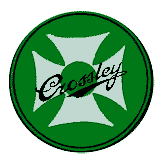In over 50 years of existence as an independent company Crossley had an involvement with:
Willys-Overland-Crossley (WOC)
In 1919 Crossley entered into an agreement with Willys-Overland of the USA for joint production in what had been the government aircraft factory run by Crossley in Heaton Chapel, Stockport.
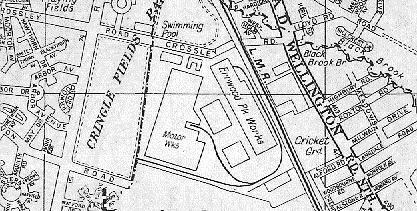
The intention was to produce a range of cars below the Crossleys in size and price. The initial production was made up of the 13.9hp Overland Light 4 assembled from chassis kits arriving from Canada to which British bodies were fitted. Gradually more and more British parts were used and from 1925 some models had a Morris Oxford engine. In 1926 the Model 96 Whippet was launched with a 2.3litre Overland side valve engine. Six cylinder models appeared in 1927 becoming the Willys-Overland Palatine in 1930.
WOC was a much larger operation than the Crossley parent and over 40,000 vehicles (including 7000 lorries) were made between 1919 and 1932. The problem was that the factory was capable of producing ten times this number.
There was also a German branch of WOC with a factory in Berlin, one of the main products of which were Austin Sevens. All the German output seems to have been badged as Austins who took 2% commission on each sale.
Several ranges of large commercial vehicles badged as Manchesters, fitted with Lycoming CT engines, and Overland or Willys Commercials fitted with Overland engines were made from 1926 as well as some smaller Garford vans from 1920 to 1924.
Also in the complex range of products were Knight sleeve valved cars made and sold as Willys-Knights.
By 1931 WOC was in serious financial trouble. The 1929 crash in America had virtually stopped US sales, the Whippet was not selling and Bedford were competing hard against the profitable Manchester trucks. In 1932 Crossley Motors severed its links with Willys Overland and carried on the WOC business on its own but financial problems continued and in August 1933 the company went into voluntary liquidation. Because of Crossley Motors shareholding in WOC the effect on the parent company was severe with a third of the Crossley balance sheet having to be written off.
The WOC story is full of "ifs". The AJS 9hp which was made in the Stockport factory from 1931 was a good car and right for the market at the time. If the Whippet had been more suitable for European markets the ups and downs in its sales might have let the company carry on until the AJS took off. If the hit on Crossley Motor's finances had not been so severe there would have been more development money for the cars and buses. And, where have all the WOCs gone?
Further information on Willys Overland is available on the Willys Overland Knight Register website at www.wokr.org
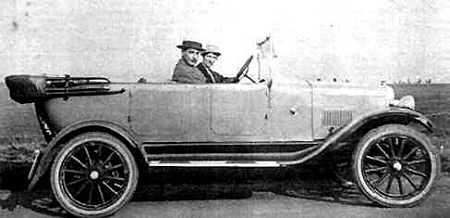
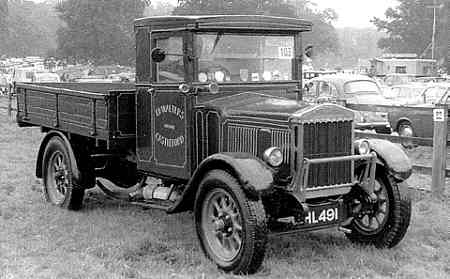
AVRO
The Manchester based AVRO aircraft company was in financial difficulties following the end of wartime orders. On the other hand Crossley Motors had more orders than space so in 1920 a take over was arranged. For three years AVRO was fully occupied building bodies for Crossley and refurbishing the thousands of 20/25's released by the RAF. In 1919 AVRO had announced its intention of entering the light car business predicting sales of 100 per week. This was post war optimism and only about 100 AVRO cars were made with various engines around the 1300cc size but also a five cylinder radial. Its unique feature was an integral wood frame and chassis clad in aluminium. In 1922 A V Roe, who was still a shareholder, had met a R O Harper who had developed a small 3 wheeled motor scooter like vehicle. These went into production between 1922 and 1924. One can be seen in the Manchester Museum of Science and Industry. The cars were only a sideline and the aircraft side of the business flourished with hundreds being made principally the 504 fighter, later used as a trainer and the 549 "Aldershot" Heavy Bomber. Two Cierva autogyros were also made. AVRO had to be sold to Armstrong-Siddeley in 1926 to pay for the mounting losses incurred by the Willys-Overland Crossley concern.
Saunderson Tractors
Part of Crossley Brothers not Crossley Motors but for a while a range
of Crossley branded tractors was available.
H P Saunderson founded his Saunderson Tractor and Implement Company in Bedford in 1890 after visiting Canada and seeing the Massey and Harris companies. In 1898 Saunderson demonstrated a "Self Moving Vehicle" at a trial organised at the Royal Show which it unfortunately failed to complete because of engine failure. It was priced at £250 but it is not known if any were sold. However, by the early 1900s production of three-wheeled multi purpose tractors was proceeding and by 1910 four-wheeled models joined the range. Some of these were powered by Crossley engines. By the start of the Great War conventional tractors were being produced just in time for the sales boom caused by the wartime labour shortage and for a short time Saunderson were Britain's biggest tractor makers. This success was not to last as the 1920s agricultural slump hit sales of all tractor manufacturers and so in 1924 Saunderson was looking for a buyer.
Crossley Brothers took over the business in 1922 putting them into competition in the vehicle business with Crossley Motors. The tractors were rebranded as Crossleys. As a result of the takeover Crossley also entered railway locomotive making for one year as work in hand at Saunderson included three petrol powered locomotives for Beswicks Limeworks of Hindlow, Derbyshire. The factory at Bedford continued in operation for many years making small stationary engines as well as agricultural machinery. It was sold in the mid 1930s and became known as the Bedford Plough and Engineering Factory continuing to operate until the 1970s.
A Saunderson Model G tractor from 1914 is preserved in the Grampian Transport Museum which is situated in Alford near Aberdeen and a 1916 model is on display at Rutland County Museum in Oakham, Rutland.
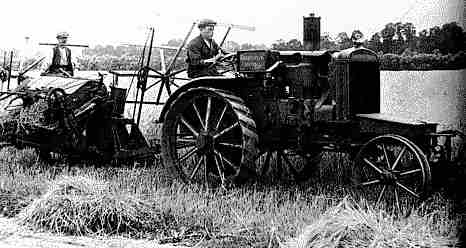
AJS
A J Stevens of Wolverhampton are best known for motor cycles but between 1929 and 1933 they also produced 3300 9hp tourer and saloon cars with a 1018cc Coventry Climax side valve engine. In 1931 the company was reorganised and motor cycle production moved to London. The car business was purchased by Crossley and moved to the Willys-Overland-Crossley plant at Heaton Chapel, Stockport where about another 300 were built between 1931 and 1932. A 12hp model was also designed with a 1496 cc Coventry Climax engine and prototypes built for the 1932 Motor Show using modified Crossley 10hp car bodies.
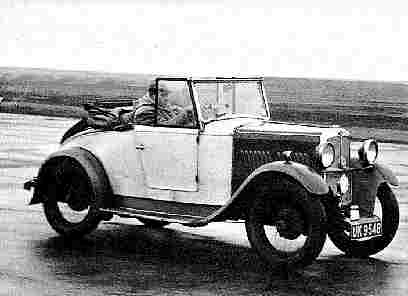
Burney (Streamline Cars Ltd)
Although Streamline Cars Ltd had no formal company ties with Crossley, their products were to form the basis of the Crossley Streamline model.
Sir Dennistoun Burney, towards the end of his time in Howden, East Yorkshire working on the R100 airship, turned his interest in aerodynamics and streamlining to cars and from a factory in Maidenhead produced twelve teardrop shaped cars between 1929 and 1933 one of which, finished in royal blue was supplied in 1931 to the Prince of Wales. No two were the same and they were as much intended as showcases for his ideas as serious production items. The design was rear-engined using a variety of power plants and had all-round independent suspension, hydraulic brakes and space frame construction. The spare wheel was carried inside one of the doors. Burney tried to interest several manufacturers including Bentley and Rolls-Royce in making his cars but these discussions came to nothing. One of the cars was taken to America on board the Cunard liner Berengaria on display in the first-class dining room.
Crossley took up some of his ideas and in 1934 produced 25 Streamlines using the 2-litre Silver engine. Burney used two lateral radiators on his cars but cooling was always problematic so Crossley used a front radiator behind a conventional grille. The Crossley at a length of 15ft 5in was much shorter than the Burney's not inconsiderable 18ft 7in.
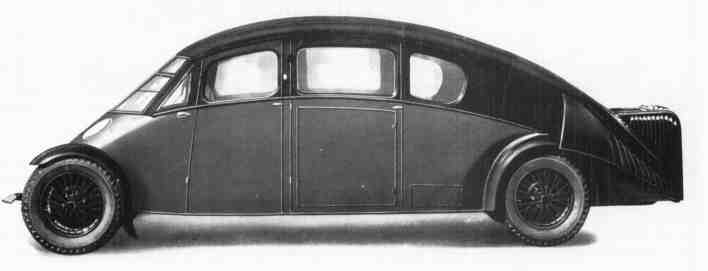
Bugatti
At the 1921 London Motor Show, William Letts announced his intention of manufacturing a Crossley edition of the 11.5 hp Type 23 Bugatti. It is not clear how much of the cars was manufactured by Crossley or whether they were assembled from Molsheim kits of parts and if from parts whether these were rough castings or ready to assemble. In the end one batch of 24 was produced. They were priced at between £575 for a "touring" chassis to £800 for a four seat coupé. One car was entered by Maury in the 1922 Isle of Man TT races.
Four cars (none with original bodies) and parts of two others survive.
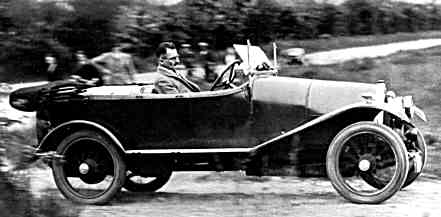
Mosquito Cyclemotor
In 1950 Crossley Motors contracted with a Mr Sergent from Liverpool, the British licencee of the Garelli 38cc Mosquito cyclemotor, to produce 1000 of their cycle engines. This very successful post war European 2 stroke engine was a 'clip on' beneath and between the pedal cranks of a bicycle and directly powered the rear wheel via a roller-drive. It weighed just 21lbs and was claimed to give a maximum speed of 20mph at 4,200rpm. Crossley units can be distinguished from their Continental brethren by their serial number beginning CML1*** and the use of a British BEC carburettor.

